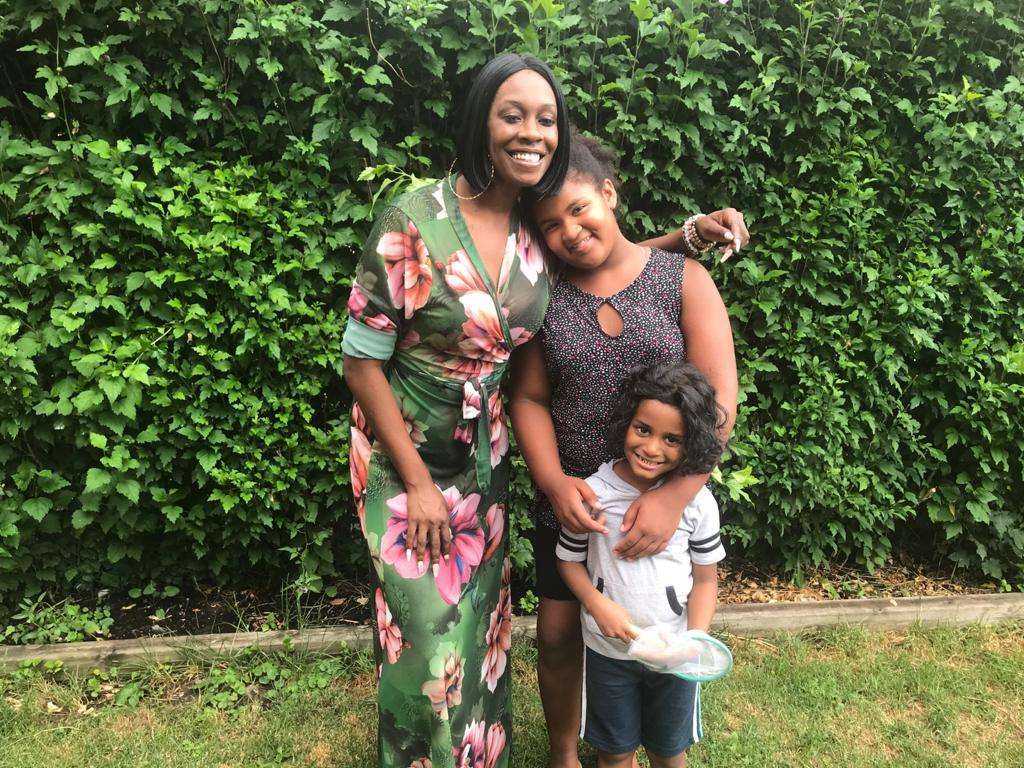on
BY SIMONE J. SMITH
As soon as I walked through the door, I knew I was in trouble.
“We’re here!” I called out.
“Come in,” a voice responded. “We are in the kitchen.”
The smell got stronger as I approached the kitchen. “You are just in time.”
“Welcome Simone! Welcome Dave! It’s been a long time.” Even though she was busy, one of the designated sous chefs Kamoy stopped just long enough to give us a hug. “You are just in time. Are you ready to eat?”
We were supposed to be fasting, but I am going to tell the truth; I caved. Hard!
I received an invitation from a dear friend, and active community member Sheena Blake, wanting to share with us the harvest of her families’ COVID-19 experience. Well really, her daughter’s experience.
Sheena was in the garden when I got there, harvesting tomatoes. She came over and gave me a big hug. “Sekmet is on her way back from the park. I hope you are ready for this.”
“We are, but we are supposed to be fasting. I guess that’s done.” I replied.
Sheena sat down with me to tell me about what had prompted her daughter to open what is now called “Seki’s Diner!”
“Simone! What Corona taught us is that we as community have to develop our self-sufficiency and interdependence. With everything going on, food sovereignty is of most importance. We as a people have the right to health and culturally appropriate food produced by us, using ecologically sound and sustainable methods. Food must be seen as more than just a commodity. I have been able to build and teach my children the traditional knowledge that goes into farming, and this is what sparked Sekmet’s interest in cooking. She was growing her food and taking it right into the kitchen to cook it.”
At that moment Sekmet walked into the kitchen. She had a big smile on her face. “Hi Simone! Hi Dave!”
“Hi Sekmet! What is on the menu today?”
“Well,” she began. “We are going to start with a Strawberry Banana Smoothie Bowl, made with chia seeds, fresh mint from our garden, coconut water, and coconut milk. Next, you are going to have Zucchini Bread, with Chicken Butternut Squash Soup (all ingredients locally grown). It has lots of dumplings in it Simone. I can’t eat any soup without dumpling.” I had to laugh, because I was the same way.
“I think that you will really like the Caulicrisps. These are cauliflower leaves fried in coconut oil, and sprinkled with Cayenne peppers, and Himalayan Sea Salt. We also have a Fresh Cellulous Bowl, filled with ingredients straight from our garden. And we can’t forget your Zucchini Pizza. I learned how to make this at my Bubi’s house. We saw it on a YouTube video, and decided to recreate it. It is delicious. Enjoy!”
What an eclectic spread, and I loved every bit of it. What I found amazing was that this young lady had taken her free time to learn how to cook, and garden. Now, she wanted to share it with the community. To think; all that food for $25.00, I asked her what she was going to do with the money she had raised.
“It started off when we found out we needed a new vacuum. As a family we sat together and discussed how we were going to raise the money. We all decided to do it this way, and I had really started enjoying cooking. I wanted to invite all my favourite people and make a special day out of it. That is how we came up with Seki’s Diner.”
What I love about what this family has done is they used the down time to grow together. What they learned as a family can be shared with the greater community and passed to future generations. To think, their simple actions allowed them to grow their own food that they know is not contaminated. They began to recognize that food is a gift of life and is not to be squandered. They were able to support local growers, which was also helpful in reducing the distance between food providers and their kitchen.
This family found a way to model a way of life, which will be very relevant in the future, and a young lady has learned how to farm, and turn her work into a business. Amazing work!
“Don’t forget your Sorrel Freezies Dave and Simone.” Sekmet reminded us as we were leaving.
“Can’t forget those beautiful. Thank you!”
Yes, I broke my fast, but it was so worth it.
Stay in the loop with exclusive news, stories, and insights—delivered straight to your inbox. No fluff, just real content that matters. Sign up today!
We, as humans are guaranteed certain things in life: stressors, taxes, bills and death are the first thoughts that pop to mind. It is not uncommon that many people find a hard time dealing with these daily life stressors, and at times will find themselves losing control over their lives. Simone Jennifer Smith’s great passion is using the gifts that have been given to her, to help educate her clients on how to live meaningful lives. The Hear to Help Team consists of powerfully motivated individuals, who like Simone, see that there is a need in this world; a need for real connection. As the founder and Director of Hear 2 Help, Simone leads a team that goes out into the community day to day, servicing families with their educational, legal and mental health needs.Her dedication shows in her Toronto Caribbean newspaper articles, and in her role as a host on the TCN TV Network.













